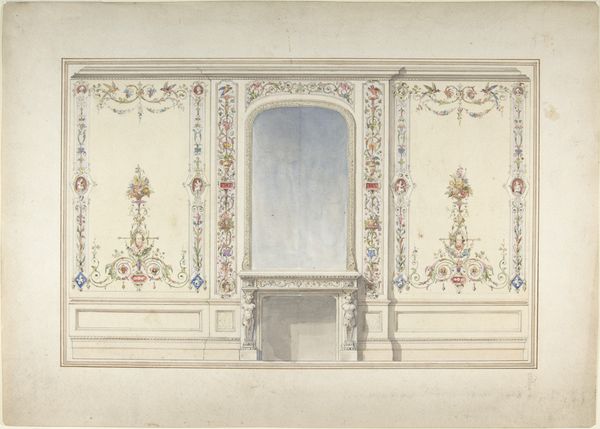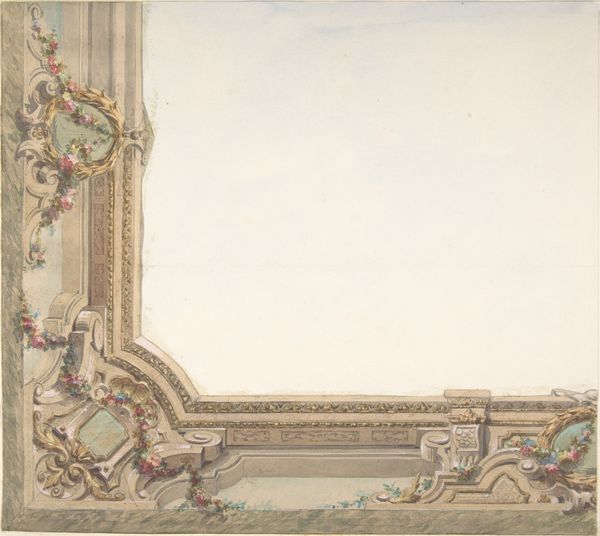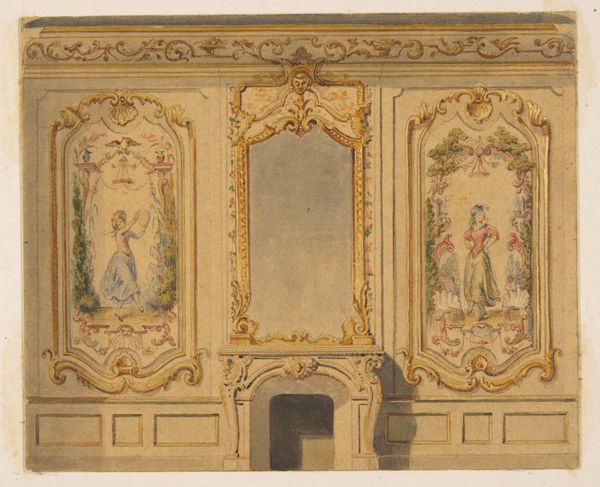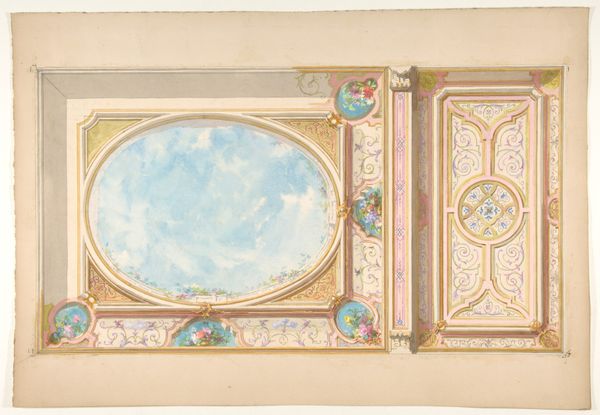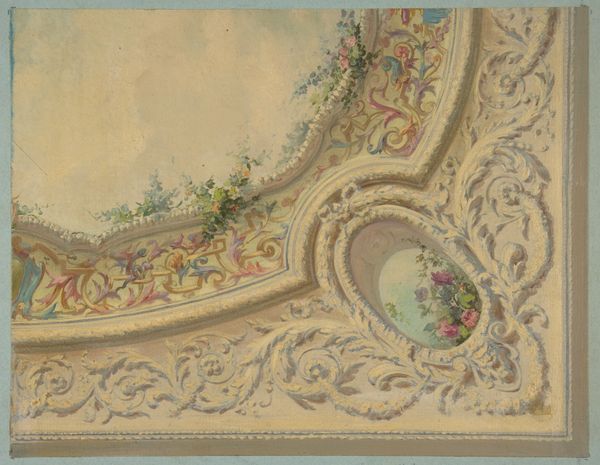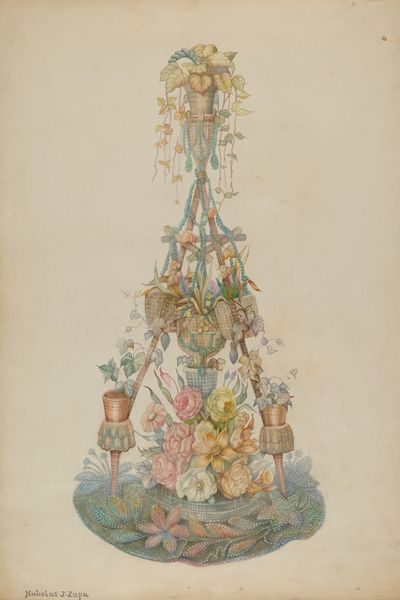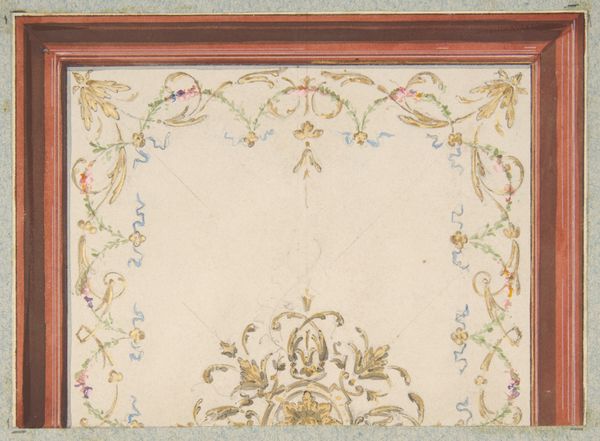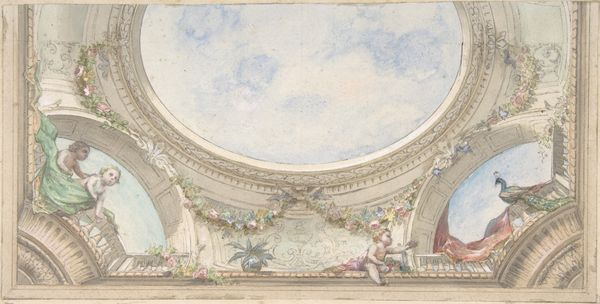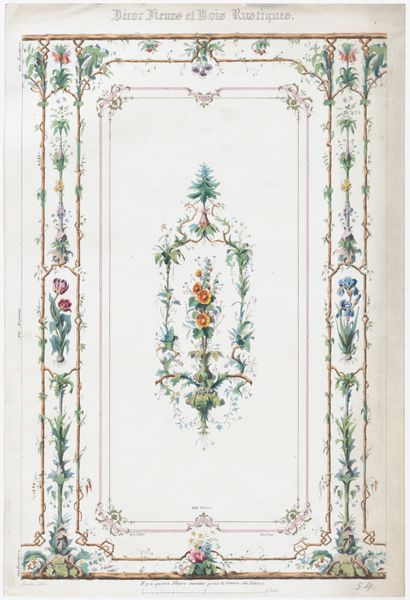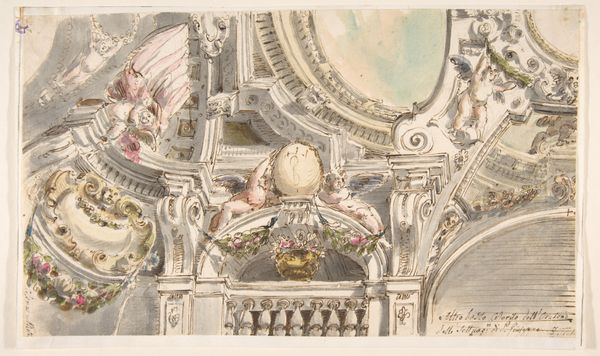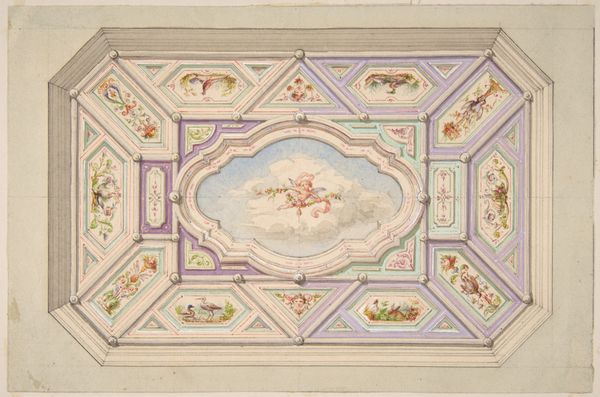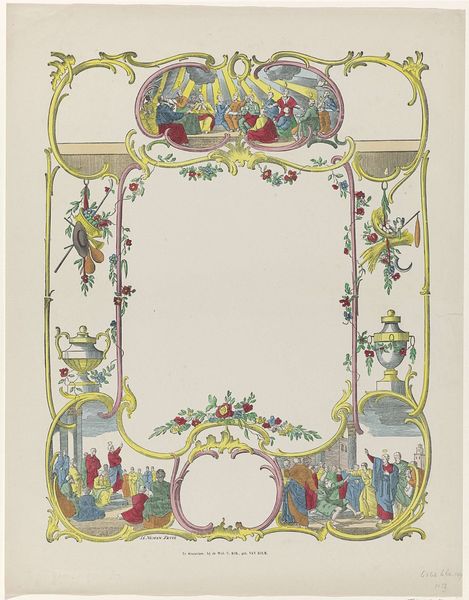
Design for a Wall with a Flower Vase, Birds, Two Gold Fish and Globe Fountains 19th century
0:00
0:00
drawing, print, watercolor
#
drawing
#
water colours
# print
#
landscape
#
bird
#
vase
#
figuration
#
watercolor
#
decorative-art
Copyright: Public Domain
Curator: Here we have a nineteenth-century design, made with watercolor and printed media. The anonymous artist has imagined a wall arrangement showcasing flower vases, birds, goldfish, and what look like globe fountains. Editor: My first impression is of confinement and idealized nature. You have these meticulously placed elements of the natural world hemmed in by decorative borders, a very ornamental rendering that feels quite contained. Curator: Exactly! The materials themselves hint at a certain socio-economic context. This probably wasn't some whimsical exercise. Instead, this drawing anticipates actual production – printed perhaps to give a semblance of luxury through inexpensive reproduction to broader layers of the population. The labor involved would also have to be considered. Editor: I see it as an almost utopian vision, though. Look at the symbolism: the birds representing freedom, the fish life and abundance. And yet, they are all contained in this meticulously ordered domestic sphere. The goldfish in bowls doubling as fountains – it's an intriguing juxtaposition of liberty and control. It speaks volumes about aspirations. Curator: That tension you point out seems key: mass production offering personalized status symbols and idealized versions of nature, manufactured dreams readily accessible via printed goods. Consider where these prints might be created and sold: rapidly industrializing urban centers in desperate need of some manufactured "nature." Editor: And look at the recurring motif of the circle – the globe fountains, the fishbowls, even the shapes of the floral arrangements. Circles traditionally symbolize wholeness and perfection. Here, however, their repetition could suggest the cyclical nature of desire, endlessly fed by this imagery of perfect domesticity. Curator: Fascinating idea. What the object provides isn't just aesthetics but the promise of aspiration. It really pushes us to reconsider boundaries, this beautiful drawing, because it dissolves expectations about the separation between high and low art, between consumption and production, labor and leisure. Editor: For me, it underlines that fundamental human urge to impose meaning and beauty on the world, even if that beauty is carefully framed and manufactured. To try to freeze aspects of the sublime within a material and decorative context. Curator: Well, I think that offers a fantastic way to see the drawing: both as a product and a projection of desire. Editor: Agreed. It's a confluence of object and sign, labor and dream.
Comments
No comments
Be the first to comment and join the conversation on the ultimate creative platform.

